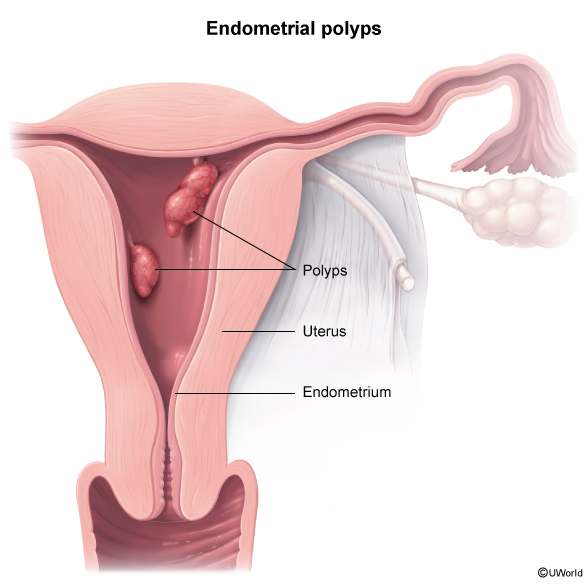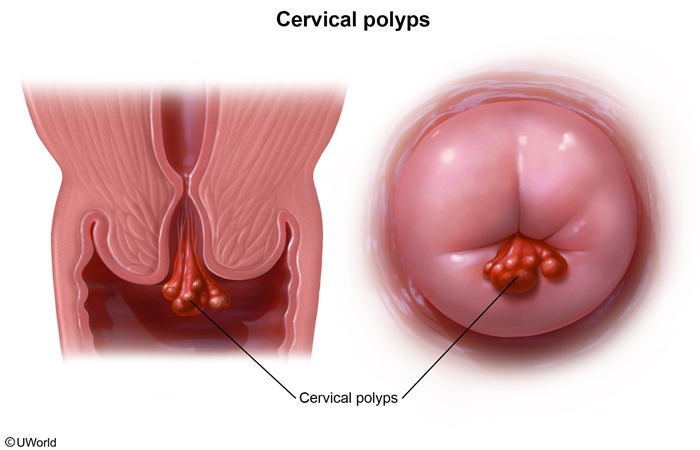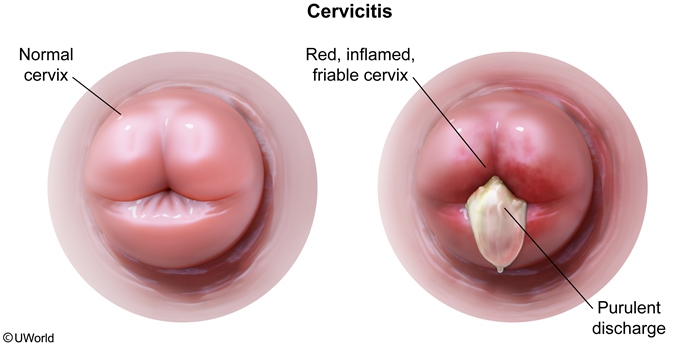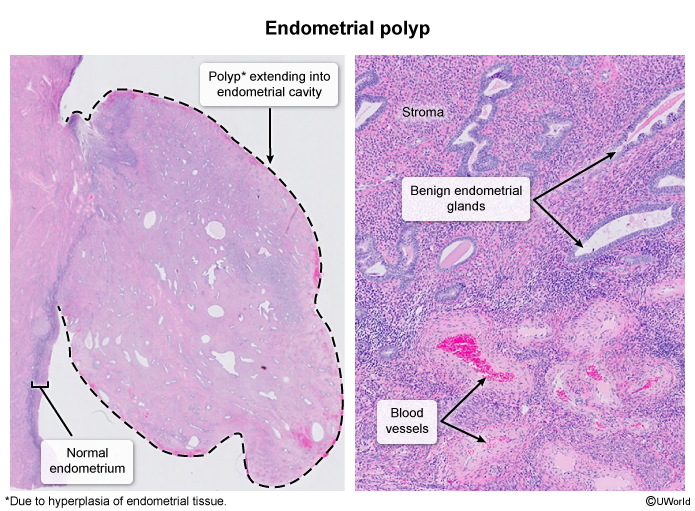Endometrial Polyp
Article Sections
Introduction
Endometrial polyps (Figure 1) are localized overgrowths of endometrial tissue that project into the uterine cavity. Endometrial polyps are relatively common and can be found in women of all ages, but they are most frequently diagnosed in perimenopausal and postmenopausal women due to abnormal uterine bleeding (AUB) or postmenopausal bleeding (PMB).
Pathophysiology and risk factors
The exact pathogenesis of endometrial polyps is not well understood, but it is believed to be hormonally influenced. The stromal and glandular cells in endometrial polyps have estrogen and progesterone receptors that can lead to uterine bleeding. Because their development is hormonally mediated, conditions that increase estrogen are risk factors for development of endometrial polyps. These conditions include:
-
Obesity (increased aromatase in fat tissue converts androgens to estrogen)
-
Tamoxifen use
Continue Learning with UWorld
Get the full Endometrial Polyp article plus rich visuals, real-world cases, and in-depth insights from medical experts, all available through the UWorld Medical Library.
Figures





Images
